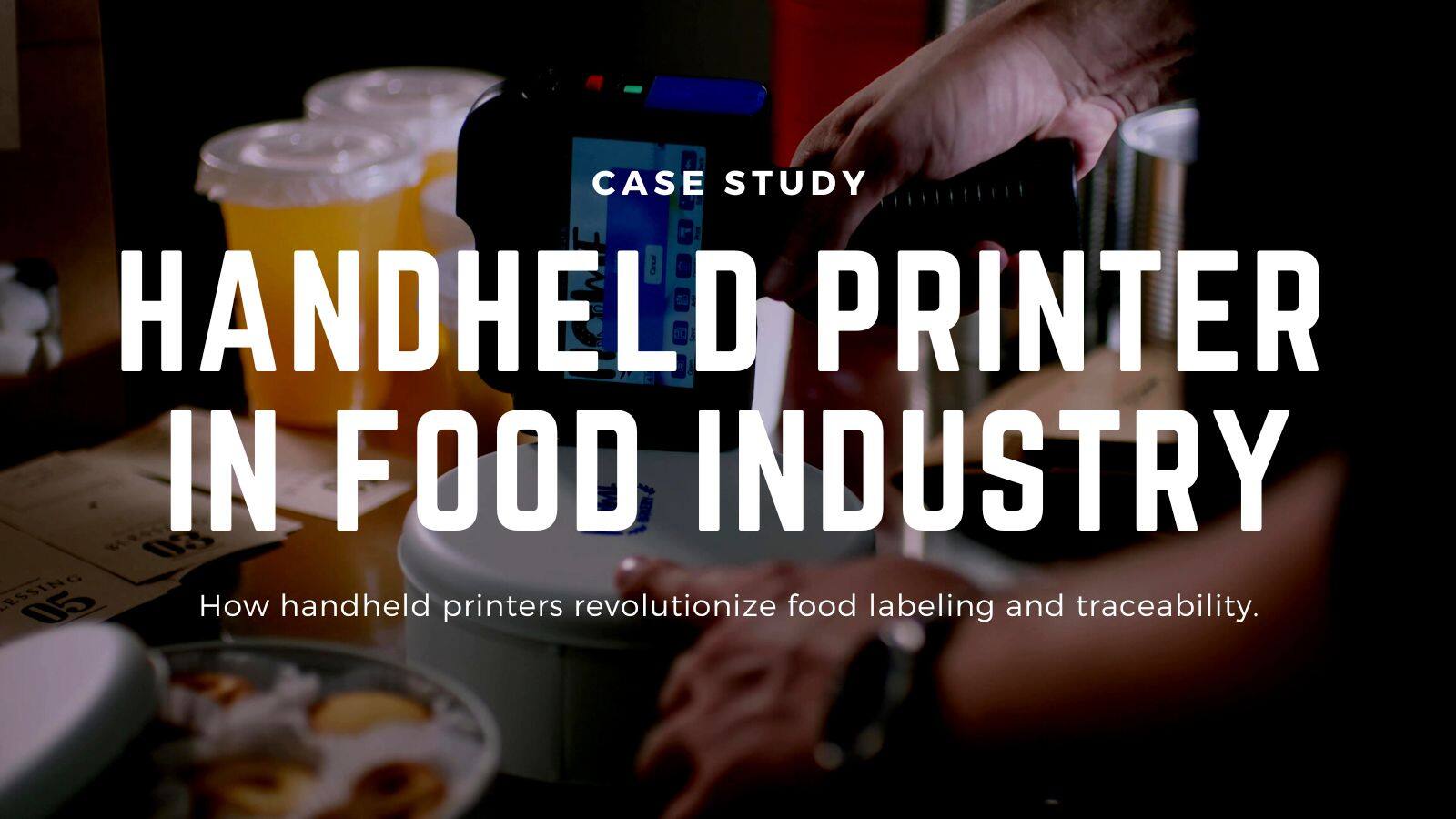Case Study: Handheld Inkjet Printers in the Food Industry

Accurate labeling and traceability place an important role in the food industry. These aspects not only ensure product safety and compliance with government regulations but also play a crucial role in maintaining consumer trust. One technology that has proven invaluable in achieving these goals is the handheld inkjet printer. In this article, we will explore how handheld inkjet printers are transforming the food industry by facilitating labeling, marking expiration dates, and enhancing traceability.
The Significance of Accurate Labeling
Labeling serves as the primary means of communication between producers and consumers in the food industry. It conveys essential information such as product names, ingredients, nutritional facts, allergen warnings, and more. Accurate and legible labeling is not only a legal requirement but also essential for consumer safety.
Handheld printer guns have become indispensable tools in this regard. They allow food producers to print labels directly onto packaging materials, including cardboard boxes, plastic containers, and even flexible packaging like pouches. This flexibility enables producers to customize labels for different product lines, promotions, or regional requirements quickly.
What can a handheld printer do for food and beverage business?
1. Printing Expiration Dates
One of the most critical aspects of food labeling is printing expiration dates. Accurate expiration dates are vital for ensuring that consumers consume products at their peak quality and safety.
Handheld inkjet date coders excel in printing these essential pieces of information. They offer the advantage of on-demand printing, which means producers can print the best before dates just before the products are packaged. This eliminates the need for pre-printed labels or packaging, reducing costs and waste.
Moreover, these handheld coding printers can print directly on various surfaces, including uneven and curved ones, ensuring that expiration dates and batch codes are consistently clear and legible while eliminating the extra costs of buying traditional labels. This is especially crucial in the food industry, where packaging materials come in various forms and textures.
2. Print UPC Codes or SKU Codes
A Universal Product Code (UPC) is a barcode format displayed as alternating black bars and spaces above a sequence of numbers on product packaging. According to Food Safety and Inspection Service (FSIS)'s article on Food Product Dating, while not mandated by law, manufacturers widely use UPCs on labels for efficient scanning of prices at supermarket checkouts. Beyond pricing, UPCs serve in inventory management and gathering marketing data, enabling computers to access detailed product information such as the manufacturer's identity, product name, size, and price.
On the other hand, a Stock Keeping Unit (SKU) code is a unique identifier allocated to a product by a company or retailer for the purposes of inventory management and internal operations. The same product may be assigned different SKUs when offered by various companies or retailers.
A handheld inkjet printer can both of these codes to help producers identify specific lots or batches of products for quality control, recalls, or traceability purposes.
3. Enhancing Traceability with Handheld Inkjet Printers
Traceability is a hot topic in the food industry, driven by consumers' growing demand for transparency and accountability. Traceability systems enable producers to track the journey of food products from farm to fork, ensuring food safety and quality at every step.
Handheld printers play a pivotal role in enhancing traceability efforts. They can generate unique identification codes, barcodes, or QR codes and allows the printer owners to print the codes directly on food packaging. These codes serve as digital passports for each product, containing information about its origin, production date, and other relevant data.
When an issue arises, such as a product recall or contamination concern, these codes enable producers to quickly identify affected products and their source. This rapid response is critical in minimizing health risks and financial losses.
Compliance and Beyond
In addition to aiding compliance with food safety regulations, portable handheld printers offer several other advantages to food producers. These include:
● Efficiency: Handheld printers are portable and easy to use, reducing production downtime and labor costs associated with labeling.
● Versatility: Handheld inkjet printers can print on a wide range of materials, from paper to plastic, and even metal, making them suitable for various packaging types.
● Cost-effectiveness: The ability to print on-demand eliminates the need for pre-printed labels or packaging, reducing waste and expenses.
● Improved Branding: Producers can use handheld printers to add branding elements such as logos or promotional messages to packaging, enhancing brand visibility.
In Conclusion
In conclusion, handheld inkjet printers have revolutionized the way the food industry handles labeling, expiration dates, and traceability. They offer an efficient, versatile, and cost-effective solution that not only ensures compliance with regulations but also helps build consumer trust by enhancing transparency and accountability in the food supply chain. As technology continues to advance, we can expect even more innovations in this space, further improving food safety and traceability in the years to come.
Ask Question
No questions and answers

